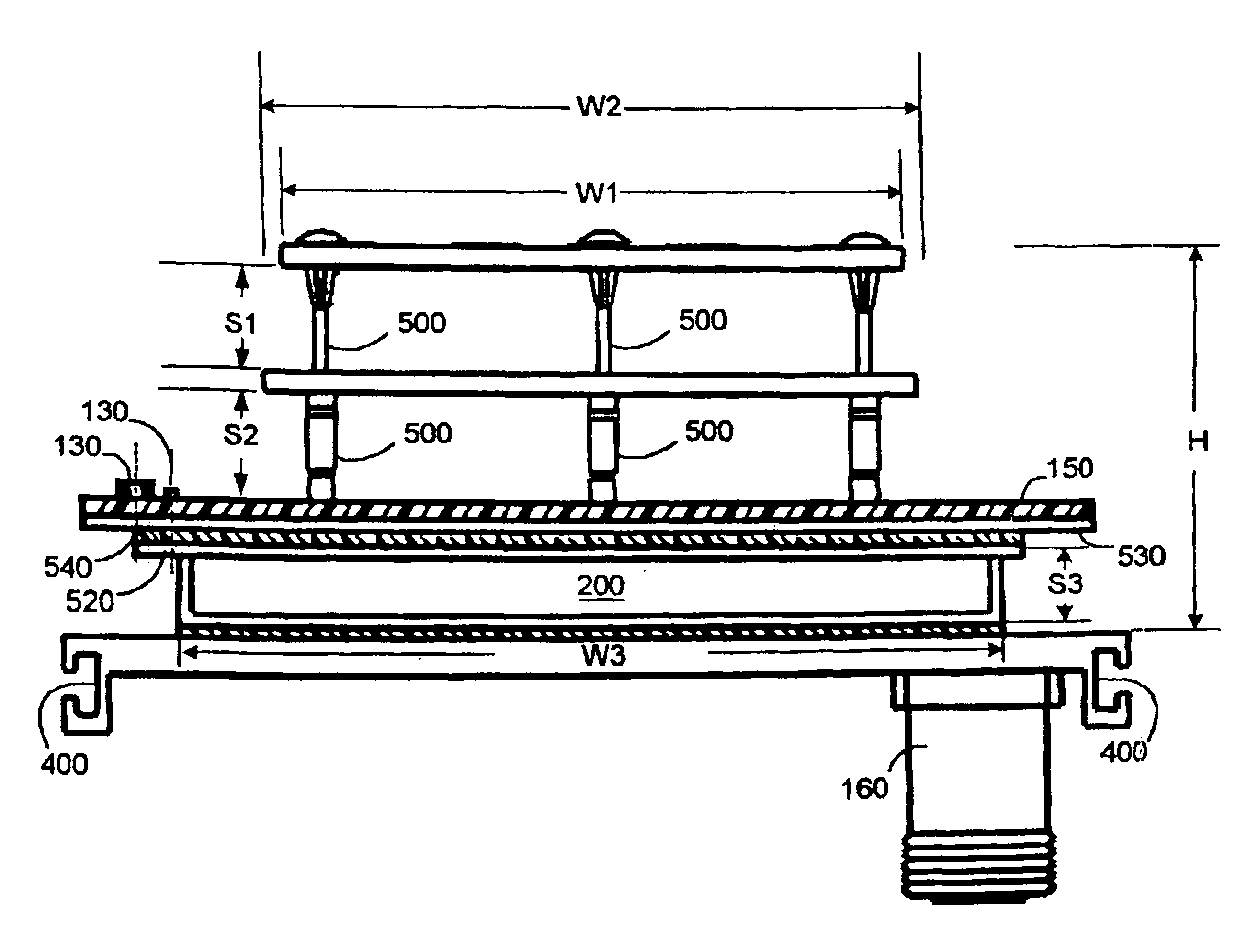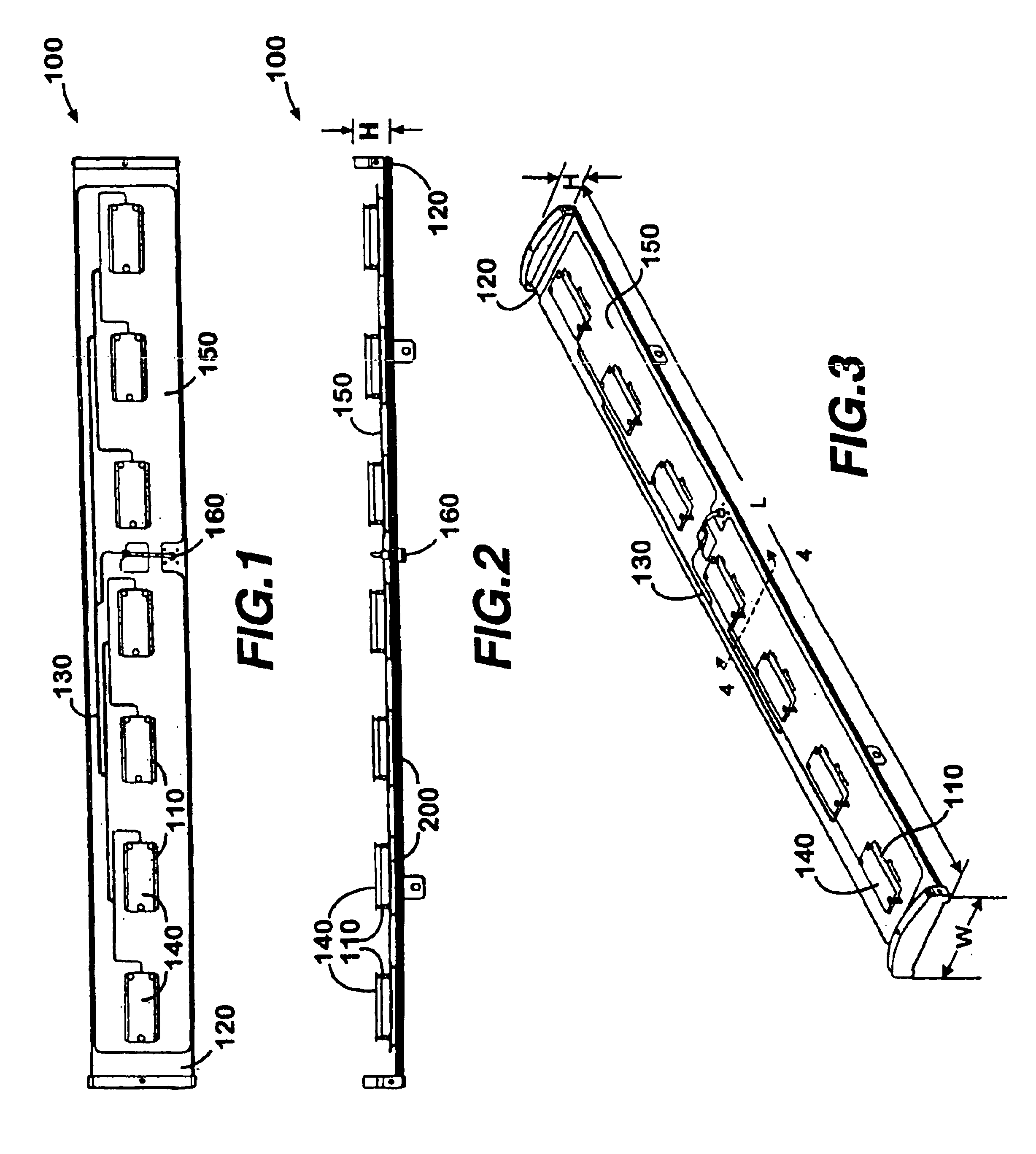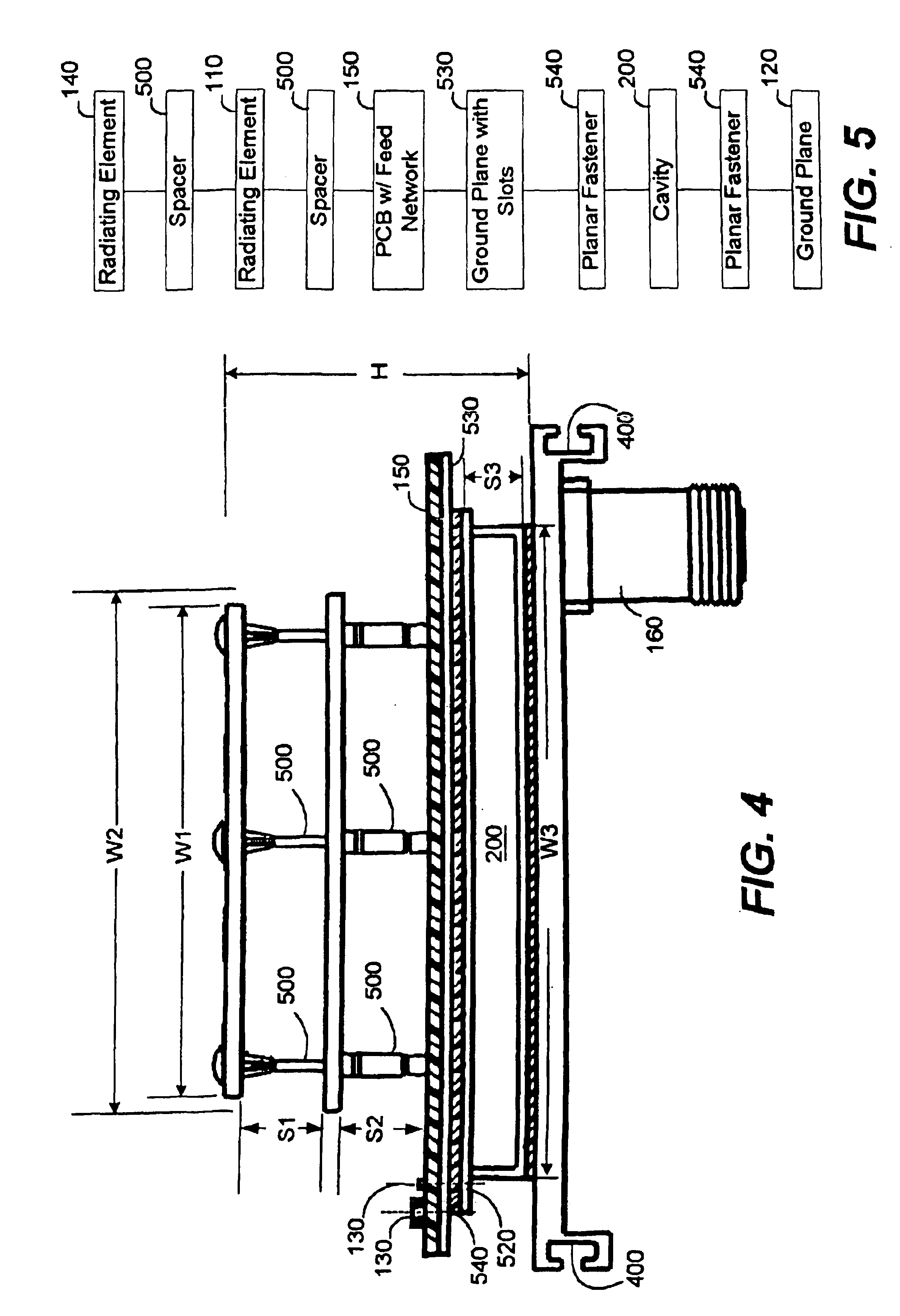Aperture Coupled Cavity Backed Patch Antenna
a cavity-backed patch antenna and cavity-back technology, applied in the direction of individual energised antenna arrays, resonant antennas, antenna earthings, etc., can solve the problems of many antenna designers, the requirement is counterproductive to antenna design, and the conventional antenna system is confined within predefined limits, so as to reduce pim, facilitate the manufacturing of cavity, and reduce the effect of passive intermodulation
- Summary
- Abstract
- Description
- Claims
- Application Information
AI Technical Summary
Benefits of technology
Problems solved by technology
Method used
Image
Examples
Embodiment Construction
[0033]The antenna of the present invention can solve the aforementioned problems and is useful for wireless communications applications, such as personal communication services (PCS) and cellular mobile radio telephone (CMR) service. The antenna system can include one or more patch radiators, a printed circuit board disposed adjacent to the one or more patch radiators, and plurality of slots disposed within a ground plane of the printed circuit board. The antenna further includes a cavity disposed adjacent to the ground plane of the printed circuit board and a second ground plane disposed adjacent to the cavity. The antenna system radiates RF energy with relatively wide beamwidth and bandwidth.
[0034]Turning now to the drawings, in which like reference numerals refer to like elements, FIG. 1 is an illustration showing an elevational view of one exemplary embodiment of the present invention. Referring now to FIG. 1, an antenna system 100 is shown for communicating electromagnetic sign...
PUM
 Login to View More
Login to View More Abstract
Description
Claims
Application Information
 Login to View More
Login to View More - R&D
- Intellectual Property
- Life Sciences
- Materials
- Tech Scout
- Unparalleled Data Quality
- Higher Quality Content
- 60% Fewer Hallucinations
Browse by: Latest US Patents, China's latest patents, Technical Efficacy Thesaurus, Application Domain, Technology Topic, Popular Technical Reports.
© 2025 PatSnap. All rights reserved.Legal|Privacy policy|Modern Slavery Act Transparency Statement|Sitemap|About US| Contact US: help@patsnap.com



